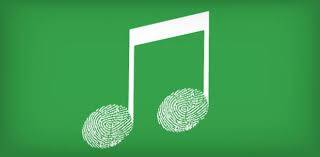 Big data has turned the music industry on it’s head, changing the business model entirely.
Big data has turned the music industry on it’s head, changing the business model entirely.
Just as eight tracks were to records and CDs to cassette tapes, online music streaming has completely changed how people purchase their music.
 Big data has turned the music industry on it’s head, changing the business model entirely.
Big data has turned the music industry on it’s head, changing the business model entirely.
Just as eight tracks were to records and CDs to cassette tapes, online music streaming has completely changed how people purchase their music.
Spotify, Pandora, iHeart Radio and many others have drastically altered music distribution and artist discovery, customizing the experience for users based on their on-platform behaviors and song preferences. And they do this via big data.
In fact, Spotify’s entire business is based on big data. Each day, around 600 GB of data is created by Spotify users as they listen and share songs, create playlists and use in-platform apps like Tunigo. Spotify then pulls from its 20+ million song library and tailors music discovery for individual users.
Further, their recent acquisition of music intelligence company Echo Nest only proves that Spotify is invested in big data — for its customization abilities, and the loyalty such customization breeds.
Of course, with the surge of digital streaming technologies, the industry has been forced to look elsewhere for serious revenue — and festivals and concerts provide.
Spanning almost every genre imaginable, thousands of fans annually flock to Lollapalooza, SXSW, Coachella, Ultra and so many others. And that expectation of customization comes with them.
This is where our on and offline lives are beginning to merge — and identity data via social media connects the dots between who you are online and what you want to see offline. As far as music tech goes, no one company knows that better than SXSW.
Attracting more than 30,000 people each year and putting on more than 2,000 official and unofficial shows, SXSW employees have a lot of people doing a lot of things in a very small amount of time. Figuring out how to impress and delight them among the brand chatter is key to keeping those audiences coming back.
“How we’re looking at data and finding out who our community is really drives to the heart of what we’re trying to do with SXSW to make it successful,” said Scott Wilcox, director of technology at SXSW, in an interview with Umbel. “Which is to serve the community that’s attracted to SXSW, and to be able to give them relevant information and opportunities related to their interests.”
Customization is driving high music industry loyalty among the brands that deeply invest in the technology to power such individualization. That technology includes identity data collection, showcasing digital brand affinities (including bands, retail and food and beverage vendors). With such information, the ability to pull the most audience-relevant brands to an event becomes simply a data-backed decision. And one that produces ROIs similar to the music industry’s CD-driven golden age. This time, it’s just smarter.








